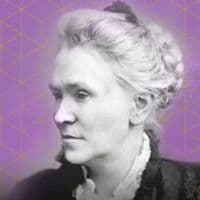Lise Meitner is often overlooked as one of the people who discovered nuclear fission—and for missing out on a Nobel Prize. Here, we take a closer look at her story and what it reveals of the history and politics of the time.

At present, Lise Meitner is almost as well known for not having been awarded a Nobel Prize as many actual Nobelists are for receiving one. Historians of science have studied her role in the discovery of nuclear fission. Scholars of the Nobel awards have examined the decision processes that excluded her. And in Germany especially, historians and scientists have taken an interest in Meitner’s story for what it reveals of the history and politics of her time. But studies such as these are rather recent. For some 50 years after nuclear fission was discovered in 1938, Lise Meitner’s contributions to the discovery of nuclear fission were not acknowledged, the Nobel records were closed to scholars, and most Germans preferred not to look closely at Lise Meitner’s story because of what it reveals of the history and politics of their time.
As a result, we have parallel historical narratives of the fission discovery. In one narrative the discovery is a strictly chemical achievement: Fission was discovered in Berlin in December 1938 when the chemists Otto Hahn and Fritz Strassmann, working at the Kaiser Wilhelm Institute for Chemistry, identified barium as a product of the neutron irradiation of uranium. The chemistry narrative, reinforced by the award of the 1944 Nobel Prize in Chemistry to Hahn alone, corresponds to his own account of the discovery.
It was widely accepted for many years, during which Hahn was in the limelight, Strassmann was in his shadow, and Lise Meitner was mostly invisible. Eventually a more comprehensive narrative emerged that includes Lise Meitner, the physicist who was Hahn’s scientific partner in the institute: The discovery was the result of a four-year investigation by Hahn, Meitner, and Strassmann that involved chemistry and physics at every stage, and even after Lise Meitner was forced to flee Germany in July 1938 she continued her collaboration with her Berlin team until the moment of discovery and beyond. In this narrative, physics is as essential as chemistry and Lise Meitner is a codiscoverer of nuclear fission who is unjustly denied the recognition she was due.
In both narratives the research is fundamental, the barium finding is key, and the discovery of nuclear fission is a sensational surprise. What has been controversial, at the time and since, is the attribution—what was the scientific basis for the discovery, and who was actually responsible for discovering nuclear fission?
In this chapter of The Posthumous Nobel Prize in Chemistry. Volume 2. Ladies in Waiting for the Nobel Prize, Lewin Sime gives an overview of the science and the Nobel awards, always keeping in mind that this is a discovery that cannot be understood apart from its historical, political, and personal context. For the discovery took place at a time of racial persecution, forced emigration, political oppression, opportunism, and fear—conditions that directly affected the scientists involved, the authorship of their publications, and ultimately the ways in which the fission discovery was received, recognized, and remembered.
For the most part gender bias is secondary in Lise Meitner’s story, but it was never absent. The early generations of women scientists were regarded as doubly “other:” as women they were unconventional, as scientists they were exceptions in a thoroughly male domain. At the height of her successful career in Berlin, Lise Meitner had reason to think she had put that behind her, but in Swedish exile her “otherness” as a woman scientist returned, adding one more layer to her outsider status as an immigrant, refugee, and foreigner. Gender bias also lent credibility to the narrative that she had not contributed to the fission discovery.
To the extent that women scientists were not expected to be important, independent, or even scientists at all, Hahn and his associates could describe Lise Meitner as absent, marginal, misguided, even obstructive—and they could do so with impunity, aware that others would tend to accept the gender stereotype. In Germany in the postwar decades, for example, Meitner was almost always described as Hahn’s Mitarbeiterin, the term for a junior coworker or assistant, which especially angered her because it was so completely untrue, and because it was used even by physicists, such as Werner Heisenberg, who had been her colleagues when she was still in Berlin.
Hahn, of course, did not refer to Lise Meitner as his Mitarbeiterin, but he did not correct those who did. The term can be found to this day in casual histories of fission, news articles, museum displays, science textbooks, and the like, a reminder of the stubborn persistence of gendered assumptions and the difficulty—perhaps impossibility—of correcting a flawed historical narrative that was widely disseminated for many years.
Lise Meitner was never completely written out of the history of 20th century science because she was exceptionally prominent during her lifetime, and because a rich documentary record has made it possible for a new generation of scientists and scholars to bring her life and work to light. Her story shows that the history of science is inseparable from its historical, political, and social context, and that particular attention is needed when evaluating traditional histories that have disproportionately neglected women and their contributions to science.
This post is an excerpt from ‘Politics, Persecution, and the Prize: Lise Meitner and the Discovery of Nuclear Fission‘, The Posthumous Nobel Prize in Chemistry. Volume 2. Ladies in Waiting for the Nobel Prize.
Chapter Author: Ruth Lewin Sime
Volume Editors: Vera V. Mainz, E. Thomas Strom
Publication Date (Web): December 14, 2018
Copyright © 2018 American Chemical Society
